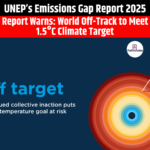Why in the news?
The Centre has eased the automatic exclusion criteria for the Pradhan Mantri Awas Yojana-Gramin (PMAY-G), enabling families with specific assets to qualify for the rural housing scheme.
What’s covered in today’s article?
- Pradhan Mantri Awas Yojana
- Pradhan Mantri Awas Yojana-Gramin (PMAY-G)
- Eased norms under PMAY-Gramin
Pradhan Mantri Awas Yojana
Pradhan Mantri Awas Yojana-Gramin (PMAY-G)
- Background:
- The Indira Awas Yojana was launched in 1996 to meet the housing needs of rural areas.
- However, in 2014, the CAG identified several issues, such as a lack of transparency in beneficiary selection, poor-quality houses, and inadequate monitoring.
- To address these shortcomings in the rural housing program, the IAY was restructured into PMAY-G, effective from April 1, 2016.
Pradhan Mantri Awaas Yojana-Gramin (PMAY-G):
- Launch: To meet the goal of “Housing for All” by 2022, the former rural housing scheme Indira Awaas Yojana (IAY) was restructured into Pradhan Mantri Awaas Yojana-Gramin (PMAY-G) as a centrally sponsored scheme starting from April 1, 2016.
- Ministry Involved: Ministry of Rural Development (MoRD) and implemented by the Ministry of Housing and Urban Affairs (MoHUA).
- Status: As of March 2023, states and UTs have sanctioned 2.85 crore houses for beneficiaries, with 2.22 crore houses completed.
- Aim: To ensure that all rural families who are homeless or living in kutcha or dilapidated houses have a pucca house with basic amenities by March 2022.
Additionally, the scheme supports rural individuals below the Poverty Line (BPL) in constructing new dwelling units or upgrading existing unserviceable kutcha houses through full grants.
- Beneficiaries: Includes SCs/STs, freed bonded labourers, non-SC/ST categories, widows or next-of-kin of defence personnel killed in action, ex-servicemen and retired paramilitary forces members, disabled persons, and minorities.
- Selection of Beneficiaries: Through a three-stage validation process involving the Socio-Economic Caste Census 2011, Gram Sabha, and geo-tagging.
- Cost Sharing: The cost is shared between the Centre and states in a 60:40 ratio for plain areas, and a 90:10 ratio for northeastern states, two Himalayan states, and the UT of Jammu and Kashmir. The Centre covers 100% of the cost for other Union Territories, including Ladakh.
Pradhan Mantri Awas Yojana – Urban (PMAY-U):
- Launch: Launched on June 25, 2015, the scheme aims to provide housing for all in urban areas by 2022.
- Implemented by: Ministry of Housing and Urban Affairs
- Status: According to the PMAY (U) dashboard, 118.64 lakh houses have been sanctioned, with 83.67 lakh completed.
- Features:
- Addresses the urban housing shortage among the poor, including slum dwellers, by ensuring a pucca house for eligible individuals.
- The mission covers the entire urban area, including statutory towns, notified planning areas, development authorities, special area development authorities, industrial development authorities, or any other authority under state legislation responsible for urban planning and regulations.
- Promotes women’s empowerment by providing house ownership in the name of female members or jointly
- New Target Under PMAY-G:
PMAY-G aims to construct an additional two crore houses by 2028-29, in addition to the existing target of 2.95 crore houses.
Key Features:
- Funding Pattern:
- The unit cost will be shared between the Central and state governments in a 60:40 ratio for plain regions.
- For rural areas in the northeastern states and the Himalayan states of Himachal Pradesh and Uttarakhand, the funding pattern will be 90:10.
- Identification of Beneficiaries:
- Beneficiaries will be identified based on social indicators from the Socio-Economic and Caste Census (SECC).
- The respective gram sabhas will handle data verification and forward this information to the administration.
Top of Form
Bottom of Form
Unit Assistance:
- The unit assistance is ₹1.20 lakh for plains and ₹1.30 lakh for hilly states, challenging areas, and IAP districts.
- In addition to financial assistance, beneficiaries receive 90 days of employment under MGNREGA (around ₹18,000).
- An additional ₹12,000 is provided for the construction of toilets.
- Automatic Inclusion:
- The criteria for automatic inclusion are as follows:
- Households without shelter
- Destitute individuals or those dependent on alms
- Manual scavengers
- Primitive tribal groups
- The criteria for automatic inclusion are as follows:
Relaxed Norms Under PMAY-Gramin
- Families with Certain Assets Now Eligible:
- The relaxed norms allow families possessing specific assets—such as two-wheelers, motorised fishing boats, refrigerators, landline phones, and incomes up to ₹15,000 per month—to qualify for the rural housing scheme.
- Previously, these assets would have led to exclusion from the scheme.
- Some Exclusions Remain Unchanged:
- Owning motorised three/four-wheelers,
- Possessing mechanised agricultural equipment,
- Having a Kisan Credit Card with a limit above ₹50,000,
- Government employment,
- Owning registered non-agricultural businesses, and
- Being part of taxpaying households.
- Revised Criteria to Support PMAY-G’s New Target:
- The revised criteria are designed to help the government meet its new target of constructing an additional two crore rural houses by 2028-29.
- Currently, 2.65 crore houses have been completed under the Housing for All program, which originally aimed to build 2.95 crore rural houses.
Steps Needed to Strengthen PMAY:
- Timely Release of Funds: Some states experience delays in receiving central government funds, with a reported deficit of ₹200 crores in 2020. To address this, timely release of state contributions and direct benefit transfers, similar to MGNREGA, is essential.
- Formal Credit Facility: The slow progress in credit disbursal is partly due to major banks like SBI lacking Economically Weaker Section (EWS)-specific products, which are hindered by high risk and low profitability. Government intervention is needed to ensure stable financing for ‘Housing for All.’
- More Inclusive: There is a need to address the limitations of the current scheme and develop targeted interventions to address the housing needs of the landless rural population.
- Quality Assurance: The government should strengthen quality monitoring mechanisms, including considering measures like social audits to ensure construction standards are met.
- Awas Bandhu: Awas Bandhu (PMAY-G Local Motivators) have effectively accelerated progress in regions such as West Bengal and Odisha. With proper training, they could become a valuable tool to enhance convergence and improve implementation.
Explore our courses: https://apnipathshala.com/courses/
Explore Our test Series: https://tests.apnipathshala.com/









